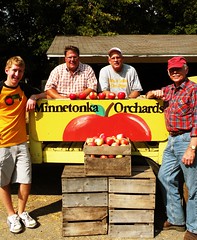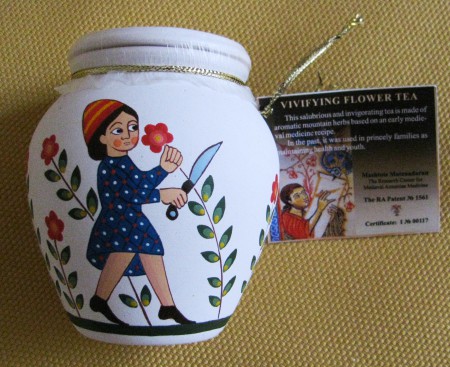Quite by chance, two items that give insights into the backstory behind the No. 1 and No. 2 fruits in the world.
The always intriguing Nicola Twilley takes her class (Artificial Cryosphere) on a tour of New York’s biggest banana handler. Sure, we all know that the banana is the industrial fruit par excellence, but I guarantee Nicola’s report will open your eyes. And give you a million conversation stoppers, should you ever need them. Did you know, for example, that a recently gassed banana ripening room smells “like a wine-soaked carpet, the morning after”?
 Next up, the patented, “managed variety” apple SweeTango®. I heard an interview with journalist John Seabrook at NPR, although unfortunately the New Yorker article that got him invited to talk about SweeTango® in the first place is not available for free. Among several fascinating elements in the story, I was struck by the control that the University of Minnesota is exercising over SweeTango®, which has its own website. Farmers cannot just sell direct to supermarkets or wholesalers. They have to sell back to a consortium established by the University, which aims to keep quality standards high. I wonder how much the University will make on the deal. I also wonder whether, like some of the DOC wines here, excess apples might be found for sale, unlabeled, at the side of a Minnesota county road. And it looks like there’s a lot more to Seabrook’s article than SweeTango®, about apples and apple breeding in general.
Next up, the patented, “managed variety” apple SweeTango®. I heard an interview with journalist John Seabrook at NPR, although unfortunately the New Yorker article that got him invited to talk about SweeTango® in the first place is not available for free. Among several fascinating elements in the story, I was struck by the control that the University of Minnesota is exercising over SweeTango®, which has its own website. Farmers cannot just sell direct to supermarkets or wholesalers. They have to sell back to a consortium established by the University, which aims to keep quality standards high. I wonder how much the University will make on the deal. I also wonder whether, like some of the DOC wines here, excess apples might be found for sale, unlabeled, at the side of a Minnesota county road. And it looks like there’s a lot more to Seabrook’s article than SweeTango®, about apples and apple breeding in general.
